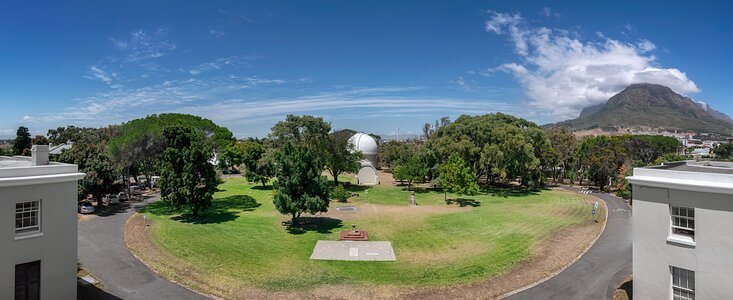- News
- Science
- Scientific Bodies
- Divisions
- Commissions
- Commission A1 Structure
- Commission A2 Structure
- Commission A3 Structure
- Commission A4 Structure
- Commission B1 Structure
- Commission B2 Structure
- Commission B3 Structure
- Commission B4 Structure
- Commission B5 Structure
- Commission B6 Structure
- Commission B7 Structure
- Commission C1 Structure
- Commission C2 Structure
- Commission C3 Structure
- Commission C4 Structure
- Commission C5 Structure
- Commission D1 Structure
- Commission E1 Structure
- Commission E2 Structure
- Commission E3 Structure
- Commission E4 Structure
- Commission F1 Structure
- Commission F2 Structure
- Commission F3 Structure
- Commission F4 Structure
- Commission G1 Structure
- Commission G2 Structure
- Commission G3 Structure
- Commission G4 Structure
- Commission G5 Structure
- Commission H1 Structure
- Commission H2 Structure
- Commission H3 Structure
- Commission H4 Structure
- Commission J1 Structure
- Commission J2 Structure
- Commission J3 Structure
- Commission X1 Structure
- Commission X2 Structure
- Past Commission Organising Committees
- Working Groups
- Centres
- Scientific Meetings
- Rules & Guidelines
- General Assemblies
- Meeting Proposals
- Future IAU Meetings
- General Assemblies
- EC Meetings
- Officers' Meetings
- Regional Meetings
- Symposia
- Focus Meetings
- Institutional Meetings
- IAU Offices Meetings
- IAU-Sponsored Meetings
- Letters of Intent submitted for 2024
- Letters of Intent submitted for 2023
- Letters of Intent submitted for 2022
- Letters of Intent submitted for 2021
- Letters of Intent submitted for 2020
- Past IAU Meetings
- Templates
- Other Meetings
- Grants & Prizes
- Scientific Bodies
- Publications
- IAU Publications
- IAU Strategic Plan
- Symposia
- WGSBN Bulletins
- Regional Meetings
- Information Bulletins/Catalyst
- E-Newsletters
- Focus Meetings
- Transactions A
- Transactions B
- Related Publications
- GA Newspapers
- CAPjournal
- IAU Books
- Brochures
- IAU Offices
- WG Reports
- Commission Reports
- Division Reports
- Past IAU Publications
- Rules, Guidelines and Instructions for Proceedings
- Publishers
- IAU Publications
- Administration
- About the IAU
- Statutes & Rules
- IAU Policies
- IAU Executive Bodies
- IAU Secretariat
- Resolutions
- Members Administration
- Administrative Dates & Deadlines
- International Organisations Relations
- Donate to the IAU
- Training in Astronomy
- Astronomy for Education
- Astronomy for Development
- Astronomy for the Public
- Office for Astronomy Outreach
- FAQ
- Themes
- Satellite Constellations
- Astronomy in Everyday Life
- How to Report a Discovery
- Careers in Astronomy
- Defining our Place in the Cosmos
- The Constellations
- Light Pollution
- Measuring the Universe
- Near Earth Objects
- How to Participate in Astronomy Research
- Naming of Astronomical Objects
- Naming of Exoplanets
- Buying Star Names
- Naming Stars
- Pluto and the Solar System
- IAU Member Statistics
- Our Moon: the Moon
- Meteors & Meteorites: The IAU Definitions of Meteor Terms
- UNESCO-IAU Portal to the Heritage of Astronomy
- Social Media
- Past Events
- Call for Online Resources
- Astronomy@Home Awards
- Contact
ann20005 — Announcement

11 February 2020
International School of Young Astronomers to be held in Cape Town, South Africa
The 44th International School for Young Astronomers, ISYA2020SA, will take place in Cape Town, South Africa, from 22 November to 11 December 2020. The International School for Young Astronomers (ISYA) is a long-standing project of the International Astronomical Union (IAU), and is now also co-sponsored by the Norwegian Academy of Science and Letters (NASL) through the Office for Young Astronomers (OYA). The 44th school will be co-organised by the South African Astronomical Observatory (SAAO).
ISYAs are three-week-long international postgraduate schools held in regions where students have fewer chances to be directly exposed to the full extent of up-to-date astrophysics. The schools aim to broaden the young students’ perspective through interactions with lecturers from around the world, who present the most recent astrophysics, both theoretical and observational. This school will also promote academic exchanges between countries, particularly in Africa.
ISYA2020 South Africa will accept 40 students with full support from the ISYA program.
Applications are open online until 30 April 2020: https://isya2020.saao.ac.za
Scientific Program:
| Stellar Structure and Evolution | Shazrene Mohammed (SAAO/UCT, South Africa) |
| Galaxy Evolution | Michelle Cluver (Swinburne University of Technology, Australia) |
| Cosmology | David Mota (U. Oslo, Norway) |
| Galactic (MW) Astronomy | Francesca Figueras (University of Barcelona, Spain) |
| Interstellar Medium | Alexander Tielens (Leiden University, Netherlands) |
| Solar System and Exoplanets | Jane Luu (MIT, USA) |
| Virtual Observatory and Databases | Itziar Aretxaga (INAOE, Mexico) |
| Radio Astronomy | James Chibueze (North-West University, South Africa) |
| Astrostatistics Lab | Juan Rafael Martínez (Center for Astrophysics, Smithsonian, USA) |
| Optical Observational Techniques | Rudi Kuhn (SAAO, South Africa) |
More information
The IAU is the international astronomical organisation that brings together more than 13 500 professional astronomers from more than 100 countries worldwide. Its mission is to promote and safeguard astronomy in all its aspects, including research, communication, education and development, through international cooperation. The IAU also serves as the internationally recognised authority for assigning designations to celestial bodies and the surface features on them. Founded in 1919, the IAU is the world's largest professional body for astronomers.
Links
Contacts
Itziar Aretxaga
ISYA Director
Email: itziar@inaoep.mx
David Mota
ISYA Deputy Director
Email: mota@astro.uio.no
Lars Lindberg Christensen
IAU Press Officer
Garching bei München, Germany
Tel: +49 89 320 06 761
Cell: +49 173 38 72 621
Email: lars@eso.org
